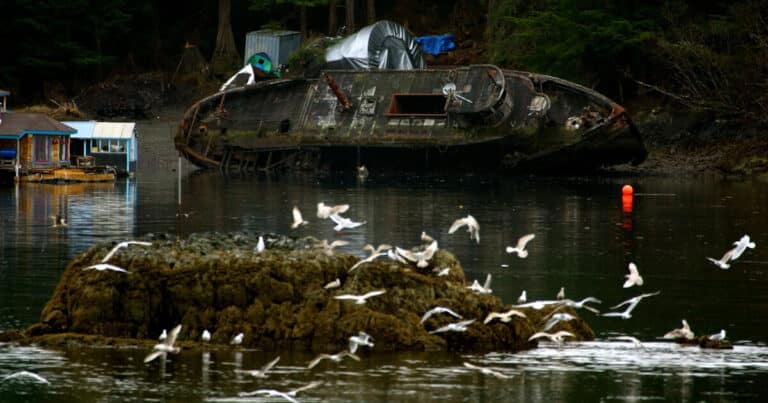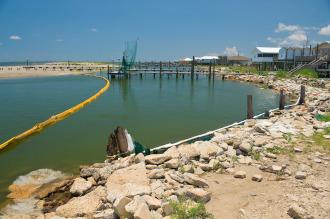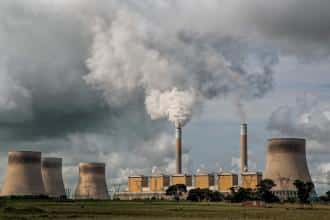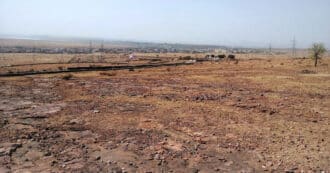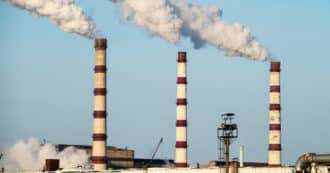By Sydney Cohen – Industrial pollution is a side effect of the industrial revolution that has been going on for hundreds of years. The term “industrialization” was coined by John Stuart Mill in 1848. At its core, it is the transition from an agrarian society to an industrialized one. This includes new ways of producing goods like mass production and manufacturing processes, as well as new forms of transportation like automobiles and trains.
Industrial Pollution Is a Global Problem
One unintended consequence is the release of pollutants into our environment which cause harm to human health, ecosystems, agriculture and to economic development. Industrialization can be seen all over the world, where many factories are located near rivers or coastal areas with little regulation or oversight for their release into the environment.
Industrial pollution is a major issue that many countries are facing in the world. While some pollution can be caused by natural causes, most of it comes from industrial processes and human activities.
What is Industrial Pollution?
We have to be careful about what we breathe. This is because pollution from factories and other industrial sources can cause a variety of health problems, including asthma and respiratory illness.
So what is industrial pollution? It’s the emissions that come out of factories or manufacturing plants that pollute the air, ground, water, or people in our communities. These emissions can come from cars, trucks, trains, and airplanes as well as from power plants and industrial facilities.
Industrial pollution results from industrial activities that emit various pollutants into our atmosphere. Some of these activities include:
- the burning of coal
- the burning of fossil fuels, such as oil, petroleum, and natural gas
- the chemical solvents used in tanning and dyeing industries
- liquid waste and untreated gas that is released into the environment
- unregulated and improper disposal of toxic chemicals and radioactive materials
All of these pollutants, as a result of industrial pollution, enter our environment through various methods. Coal, for example, when burned for power, releases high amounts of sulfur dioxide, nitrogen oxide, particles, carbon dioxide, mercury and other heavy metals, as well as fly ash and bottom ash, into the air and atmosphere.
Industrial Pollution Causes Climate Change
All of these emissions have a severe health, biological, and environmental impact, such as reduced air quality and high air pollution levels. Carbon dioxide, one of the primary greenhouse gases released from burning fossil fuels like coal, oil, and natural gas, is a leading cause of climate change.
The greenhouse effect occurs when these greenhouse gases in the earth’s atmosphere trap the heat from the sun, raising global land and water temperatures. Because so much industrial pollution is caused by the release of greenhouse gases from the burning of fuel, it is necessary that we reduce industrial pollution in order to protect our global and environmental health.
Why Industrial Pollution Persists
However, while it is well-known that industrial pollution is a huge contributor to air, water, and land pollution, there are many factors that continue to allow industrial pollution to exist.
For example, there is a lack of consistent policies to control pollution. Many policies are not effective and lack enforcement. This is one of the main causes of mass-scale pollution that affects so many people and ecosystems.
Another factor in the cause of industrial pollution is unplanned industrial growth and the use of outdated technologies. During the industrial revolution, when the rapid growth of the manufacturing industry created an influx of jobs and mass movements into cities, companies disregarded regulations in order to generate as much profit as possible.
This resulted in many pollutants entering our land, air, and water sources. Additionally, the continued use of outdated technologies, such as factories that still rely on fuel derived from natural resources for power, drastically reduces the factory’s efficiency and sustainable manufacturing processes. China, for example, has over 1,000 power stations that still rely on coal.
Waste Disposal Causes Industrial Pollution
A huge cause of industrial pollution is inefficient waste disposal. Most wastewater treatment facilities are not equipped to filter out the many organic compounds, heavy metals, toxic chemicals, and other hazardous pollutants that enter our ground and surface water sources.
As “long-term exposure to polluted air and water causes chronic health problems,” and, given the interconnectedness of our water sources, industrial pollution is an incredibly pressing issue.
The Extraction of Natural Resources causes Industrial Pollution
Another main cause of industrial pollution is the extraction and use of natural resources. The invasive extraction of these minerals and materials, such as oil fracking, for example, can often cause soil pollution, and oil leaks and spills, which have adverse effects on human, plant, animal, and marine life.
Industrial Pollution Caused By Organic Compounds
Industrial pollution is a huge problem in many countries. It can be caused by factories, coal-fired power plants, and other sources of air pollution. The most common type of industrial pollutants are organic compounds.
These compounds are created during the production process for certain items like fertilizers and plastics. They can also come from the incineration or burning of materials containing organic material such as wood or fossil fuels. Organic compounds are considered hazardous because they have been linked to cancer, birth defects, respiratory problems, skin irritation, and damage to the nervous system among other things.
Persistent Organic Pollutants Cause Industrial Pollution
Let’s take a closer look at some of these organic compounds that result from industrial pollution. The organic compounds that are released into our environment through industrial pollution are known as Persistent Organic Pollutants or POPs.
POPs are toxic chemicals that have a detrimental effect on human and environmental health. POPs include various substances such as “intentionally produced chemicals currently or once used in agriculture, disease control, manufacturing, or industrial processes,” and “unintentionally produced chemicals, such as dioxins, that result from some industrial processes and from combustion.”
DDT is an example of a POP that has caused a variety of harm to humans and animals. DDT has been used worldwide since the 1940s in agriculture as a pesticide and to protect against insect-borne diseases. However, it was found in the 1960s that birds with high levels of DDE (a metabolite of DDT) suffered from the inability to produce offspring due to the chemicals’ biological interaction, causing the thinning of eggshells.
The emerging research on the harmful long-term effects of DDT on humans and animals prompted the Environmental Protection Agency (EPA) to restrict the registration of DDT in 1972.
Additionally, the burning of chemicals, most frequently from incineration plants, release toxic compounds known as dioxins, which cause immense environmental hazards as they are absorbed by the soil and then enter the food chain through animals. Animals frequently accumulate large levels of dioxins, which then enter the human body through animal consumption and food production.
Heavy Metals Cause Industrial Pollution
Heavy metals are also a major cause of industrial pollution. They enter the environment through mining, smelting and refining processes, manufacturing activities and transportation. These heavy metals can be found in soil, water and air as well as food products.
Heavy metals are inorganic pollutants that “are being discarded in our waters, soils and into the atmosphere due to the rapidly growing agriculture and metal industries, improper waste disposal, fertilizers and pesticides.” Some of these metals, such as titanium, vanadium, chromium, manganese, and iron, are quite common in our everyday lives.
All of these materials are naturally found in the earth’s crust. However, they enter our environment at hazardous levels from activities like mining, shipwrecks, oil spills, and fires. The entry of these pollutants into our ecosystems results in soil, water, and air pollution.
Contaminated sites where the soil has absorbed significant amounts of heavy metals make it incredibly hard for plant and animal life to thrive. Human bodies, when consuming contaminated water or food, can accumulate toxic levels of these metals, which can result in chronic disease and illness, sometimes fatal.
Regulating Industrial Pollution
The United States Environmental Protection Agency (EPA) is the government agency that regulates pollution levels in the environment.
They are responsible for enforcing a variety of environmental laws and regulations, including those pertaining to hazardous waste management and toxic air emissions. The EPA is also tasked with setting performance standards for various industries which emit toxic substances into the atmosphere.
Actions to Reduce Industrial Pollution
Fortunately, the EPA has taken measures over the last 50 years to reduce the environmental impact of industrial pollution.
One example of these changes is the restriction of DDT use, which started in the 1970s, and now DDT is no longer registered for use.
Additionally, the EPA implemented the Clean Air Act, Clean Water Act, and the EPA Superfund and Resource Conservation and Recovery Act Corrective Action programs.
All of these initiatives work to regulate the number of dioxins released into the air and water and clean up contaminated soil. These efforts gather information on dioxin release to inform future actions and reduce the risk associated with exposure to dioxins.
Industrial Pollution from Biblical Sources
The environmental effects of industrial pollution are demonstrated in Eco Bible: Volume One: An Ecological Commentary on Genesis and Exodus: Genesis 14:10 – “Now the Valley of Siddim was dotted with bitumen pits; and the kings of Sodom and Gomorrah, in their flight, threw themselves into them, while the rest escaped to the hill country.”
Rabbi Yonatan emphasizes this biblical connection to the contaminants resulting from industrial pollution, commenting that “today, we and our leaders are trapped by economic inertia and political resistance. Oil remains our fuel of choice to make gasoline for cars and trucks, jet fuels for airplanes, tar and asphalt for paving the roads, and even plastic which is filling our oceans with trash that never fully breaks down.”
“Abraham provides an example of lifting people from being trapped in fossil fuels…We do not need to wait until someone rescues us – or until we run out of all fossil fuels – but can now take steps as individuals, communities, and nations to free ourselves from devastating fossil-fuel use.”
Working Together Globally to Prevent Industrial Pollution
Industrial pollution has become a major problem in the past century. The majority of this pollution is caused by organic compounds and dioxins entering our environment at toxic levels. This results in air, water, and land pollution that causes environmental and human health issues.
In order to combat the industrial pollutants that are polluting our planet’s resources, we need to work together with industries and policymakers globally to prevent further harm.
* Featured image source

